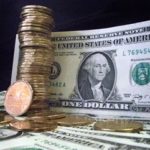Friday’s trade (in GMT terms) saw GBP/USD within the range of 1.3122-1.3279. The pair closed at 1.3138, edging down 0.41% compared to Thursdays close. It has been the 177th drop in the past 325 trading days and also a second consecutive one. The daily low has been a level unseen since August 22nd, when a low of 1.3034 was registered. In weekly terms, GBP/USD added 0.47% to its value during the past week. It has been the 17th gain in the past 34 weeks and also a second consecutive one. The major pair has increased its drop to 0.73% so far during the current month, after losing 0.59% of its value in July.
At 8:00 GMT today GBP/USD was edging down 0.27% on the day to trade at 1.3103. The pair touched a daily high at 1.3141 during the early phase of the Asian trading session, undershooting the daily R1 level, and a daily low at 1.3099 during early European trade.
On Monday GBP/USD trading may be influenced by the following macroeconomic report listed below.
Fundamentals
United Kingdom
Summer Bank Holiday
Today is the Summer Bank Holiday in the United Kingdom. Banks in the country are to remain closed.
United States
Personal Income, Personal Spending and PCE Inflation
Personal spending in the United States probably rose 0.3% in July, according to market expectations, while personal income was probably up for a 16th consecutive month in July, increasing at a monthly rate of 0.4%.
Consumer spending, which accounts for over two thirds of the nation’s GDP, rose 0.4% in June, while matching the rate in May. In June, spending on non-durable goods increased 0.7%, spending on services rose 0.5%, while spending on long-lasting manufactured goods such as automobiles shrank 0.3%.
At the same time, personal income increased 0.2% in June, following another 0.2% surge in the prior month. In June, wages and salaries went up 0.3%, proprietors income rose 0.6%, while rental income increased 0.4%. On the other hand, personal dividend income went down 0.7% and personal interest income was 0.3% lower.
Higher-than-expected rates of increase imply good employment conditions and, therefore, are dollar positive. The Bureau of Economic Analysis is to publish the official figures at 12:30 GMT.
At the same time, the Core PCE Price Index, the preferred measure of inflation by the Federal Reserve, probably rose 1.6% year-on-year in July, according to expectations, or matching the rate of increase reported in the previous four months. On a monthly basis, the Core PCE Price Index probably increased for a seventh consecutive month in July, going up 0.1%, according to analyst projections.
US Dollar boosted after Yellen hints a rate hike this year still on the table
On Friday the greenback received a strong support against its major peers, after in a statement at the Jackson Hole symposium the Fed Chair, Janet Yellen, noted that the case for a rate hike has strengthened in the past months. According to extracts from her speech at the event: “U.S. economic activity continues to expand, led by solid growth in household spending. But business investment remains soft and subdued foreign demand and the appreciation of the dollar since mid-2014 continue to restrain exports. While economic growth has not been rapid, it has been sufficient to generate further improvement in the labor market.”
“Based on this economic outlook, the FOMC continues to anticipate that gradual increases in the federal funds rate will be appropriate over time to achieve and sustain employment and inflation near our statutory objectives. Indeed, in light of the continued solid performance of the labor market and our outlook for economic activity and inflation, I believe the case for an increase in the federal funds rate has strengthened in recent months. Of course, our decisions always depend on the degree to which incoming data continues to confirm the Committees outlook.”
Following Yellens appearance, in an interview with CNBC, the Fed vice chairman, Stanley Fischer, noted that the Feds Chair remarks indicated how close policy makers could be to raise the target range for the federal funds rate, in case incoming macroeconomic data continued to point to a good economic outlook.
Correlation with other Majors
Taking into account the business week ended on August 26th and the daily closing levels of the major currency pairs, we come to the following conclusions in regard to the strength of relationship:
GBP/USD to NZD/USD (0.8950, or very strong)
GBP/USD to AUD/USD (0.4023, or moderate)
GBP/USD to EUR/USD (0.1873, or weak)
GBP/USD to USD/CHF (-0.3258, or moderate)
GBP/USD to USD/JPY (-0.5156, or strong)
GBP/USD to USD/CAD (-0.7216, or strong)
1. During the examined period GBP/USD moved almost equally in one and the same direction with NZD/USD.
2. GBP/USD moved strongly in the opposite direction compared to USD/JPY and USD/CAD during the past week.
3. The correlation between GBP/USD and EUR/USD was insignificant.
Bond Yield Spread
The yield on UK 2-year government bonds went as high as 0.183% on August 26th, or the highest level since August 17th (0.192%), after which it closed at 0.170% to add 1.1 basis points (0.011 percentage point) compared to August 25th.
Meanwhile, the yield on US 2-year government bonds climbed as high as 0.849% on August 26th, or the highest level since June 3rd (0.899%), after which it fell to 0.845% at the close to add 5.2 basis points (0.052 percentage point) compared to August 25th.
The spread between 2-year US and 2-year UK bond yields, which reflects the flow of funds in a short term, widened to 0.675% on August 26th from 0.634% on August 25th. The August 26th yield spread has been the largest one so far this year.
Daily, Weekly and Monthly Pivot Levels
By employing the Camarilla calculation method, the daily levels of importance for GBP/USD are presented as follows:
R1 – 1.3152
R2 – 1.3167
R3 (Range Resistance – Sell) – 1.3181
R4 (Long Breakout) – 1.3224
R5 (Breakout Target 1) – 1.3275
R6 (Breakout Target 2) – 1.3295
S1 – 1.3124
S2 – 1.3109
S3 (Range Support – Buy) – 1.3095
S4 (Short Breakout) – 1.3052
S5 (Breakout Target 1) – 1.3001
S6 (Breakout Target 2) – 1.2981
By using the traditional method of calculation, the weekly levels of importance for GBP/USD are presented as follows:
Central Pivot Point – 1.3150
R1 – 1.3267
R2 – 1.3395
R3 – 1.3512
R4 – 1.3628
S1 – 1.3022
S2 – 1.2905
S3 – 1.2777
S4 – 1.2648
In monthly terms, for GBP/USD we have the following pivots:
Central Pivot Point – 1.3171
R1 – 1.3546
R2 – 1.3858
R3 – 1.4233
R4 – 1.4608
S1 – 1.2859
S2 – 1.2484
S3 – 1.2172
S4 – 1.1860





